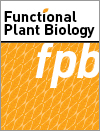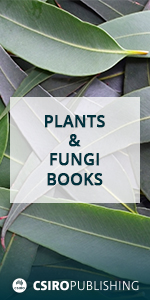Closed-loop microalgal CO2 capture integrates circular bioeconomy with decarbonization. Hybrid photobioreactors and nutrient recycling boost biomass and CO2 utilization. Industrial pilot projects show pathways to scale up microalgae-based CO2 capture. Industrial symbiosis and regulatory advances drive market adoption of CO2 capture.

Functional Plant Biology
Volume 52 Number 9 2025
We identified optimal nitrogen (N) levels for cotton seedlings and their nutrient demands (N:P:K:Ca ≈ 1:0.2:1.2:0.5). Low N promoted root growth by preferential nutrient allocation, while N-use efficiency correlated closely with root traits.
FP25145 Abstract | FP25145 Full Text | FP25145PDF (2.2 MB) | FP25145Supplementary Material (173 KB) Open Access Article
This research directly addresses the understanding of physiological and molecular mechanisms involved in plant responses to abiotic stress. We provide a detailed analysis of biochemical responses, including the accumulation of osmoprotectants under heat stress. Additionally, we offer a comprehensive transcriptomic profile that highlights the upregulation of genes involved in osmoprotectant biosynthesis, antioxidant defense, heat shock proteins, and sugar transport, contributing to thermotolerance. We believe our findings provide significant insights into plant responses to heat stress at multiple levels.
Salinity is considered a major threat affecting cereal crop yield, such as sorghum. Some plant secondary metabolites, such as digitoxin, can help crops to alleviate toxic salinity effects. Digitoxin induces gene activation that helps plants reduce salinity effects by controlling the potassium/sodium channel and ultimately mitigates toxic salinity effects on sorghum.
FP25031 Abstract | FP25031 Full Text | FP25031PDF (1.7 MB) Open Access Article
Despite its potential, the role of ascorbic acid (AsA) in mitigating high-temperature stress (HTS) in chickpea has not been extensively studied. Given IPCC projections that global temperatures have exceeded the optimal range for chickpea cultivation, posing risks to yield stability, our research highlights the contribution of AsA to HTS tolerance. High AsA accumulation genotypes maintained cooler canopies, higher chlorophyll content, and enhanced antioxidant activity, i.e. ascorbate peroxide, lipid peroxidation rate, and proline content supporting HTS resilience. Genotypes with high AsA levels exhibited higher seed yield under HTS.
Epiphytes – plants that grow on other plants – can move and absorb water across their leaf surfaces using specialized hairs. In bromeliads, this ability is found in species from dry, seasonal habitats and is linked to having less efficient internal water transport. This discovery highlights how plants evolve creative solutions to survive in challenging environments.
As plants experience drought, transpiration rates decrease and can reduce carbon assimilation, biomass production and yield. We evaluated how melon plants, exposed to drought, changed their water status at predawn and midday to identify thresholds when drought compromises plant performance. We identified the transition from water-consumptive (higher transpiration) to water-conservative (limited transpiration) behaviour, and propose that this approach can be used to better manage irrigation and support effective use of water without a yield decrease.
Sustainable agricultural practices play a crucial role in enhancing crop productivity and quality while minimizing environmental impact. The effects of various fertilizers: synthetic, organic (cow manure, vermicompost), and their combinations, on the growth, nutrient content, and essential oil composition of Zataria multiflora Boiss. over 2 years in field conditions were examined. Results show that organic fertilizers improve soil health, promote plant growth, and increase essential oil yield while enriching the aromatic profile, suggesting that eco-friendly fertilization practices can enhance productivity and sustainability.
This study explores the combined foliar application of nitric oxide (NO) and L-arginine (L-Arg) to alleviate nickel (Ni) toxicity in rice. The treatment enhanced plant growth, photosynthesis, antioxidant defense, osmolyte accumulation, and reduced Ni uptake. Gene expression analysis revealed upregulation of stress-related genes. Multivariate analyses confirmed clear physiological and biochemical improvements. These results suggest that co-application of NO and L-Arg is a promising strategy to improve rice tolerance to heavy metal stress.





